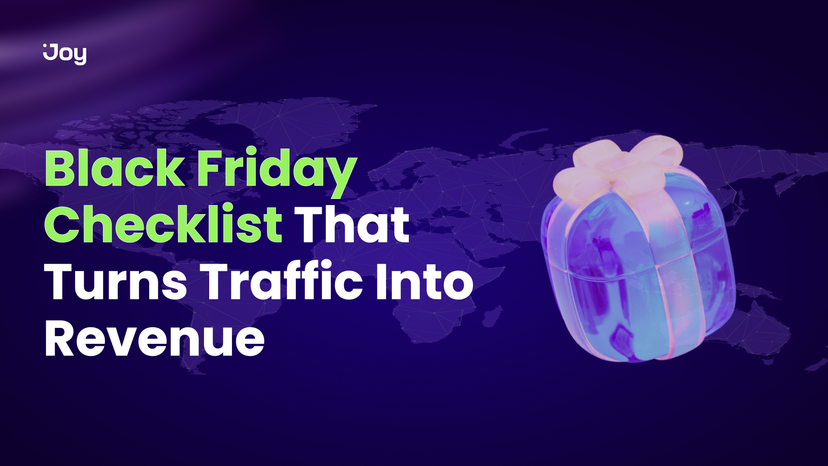When I first started shopping online, I was all about convenience – quick clicks, fast delivery, and skipping long checkout lines. But as I browsed more and more, I realized something: the stores that kept me coming back weren’t just the ones with great deals or sleek designs. They were the ones that made me feel valued.
It got me thinking: Why are some eCommerce loyalty programs so effective at attracting customers? To satisfy my curiosity, I researched the strategies behind them and the companies that are doing the best job.
In this article, I’m sharing what I know with you! Let’s dive right in!
What Are E-Commerce Loyalty Programs?

E-commerce loyalty programs are strategic systems designed to encourage customers to return to an online store and make repeat purchases. These programs usually provide points, rewards, or exclusive perks for purchases, which can be redeemed for discounts, special offers, or other benefits. The goal is to keep customers engaged and boost their lifetime value by making every interaction more rewarding.
Why Loyalty Programs Are Essential For E-Commerce?
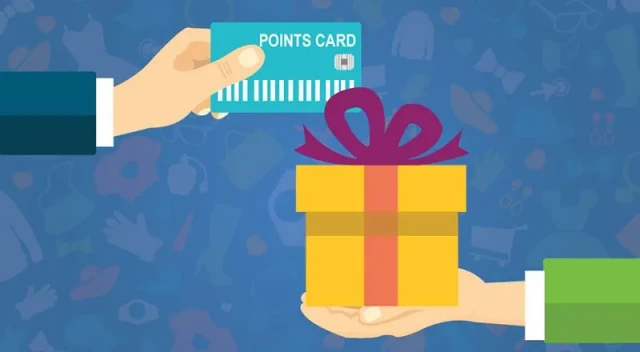
Loyalty programs for ecommerce businesses do more than reward customers, they drive measurable growth. Here’s why the best ecommerce loyalty programs are a must-have for any brand looking to scale sustainably.
Boost Repeat Purchases and Retention
E-commerce rewards programs are proven to increase customer retention by encouraging shoppers to return. According to the Harvard Business Review, improving retention by just 5% can lead to profit increases of 25% to 95%. Loyalty programs keep your brand top-of-mind and give customers a reason to come back, even when competitors offer similar products.
Increase Customer Lifetime Value (CLV)
The best loyalty programs in e-commerce consistently drive higher CLV. Members of loyalty programs spend more over time, with research showing they can have a 30% higher lifetime value than non-members. By rewarding repeat purchases and engagement, you’re maximizing the value of every customer you acquire.
Improve Profit Margins Without Discounts
Unlike flash sales or coupons that cut into margins, ecommerce loyalty programs incentivize repeat purchases through points, perks, or exclusivity, without relying on deep discounts. This encourages value-driven rather than price-driven shopping behavior.
Gain Actionable Customer Data
Loyalty programs for e-commerce businesses offer a goldmine of insights. You can track purchasing habits, preferences, and engagement patterns to create hyper-personalized marketing campaigns, segment your audience, and forecast future demand more accurately.
Fuel Organic Growth Through Referrals
The best ecommerce loyalty programs often include built-in referral rewards, which turn happy customers into your most effective marketing channel. With the right incentives, shoppers will promote your brand through word of mouth, reducing acquisition costs and increasing trust.
Proven Loyalty Programs Types for E-Commerce
There’s no one-size-fits-all model. The best loyalty programs for e-commerce vary depending on your brand, audience, and goals. Here are the most effective types you can implement today:
Type | How It Works | Best For | Example |
Points-Based | Customers earn points for actions; redeem for rewards | Driving repeat purchases and engagement | Sephora Beauty Insider |
Tiered Programs | Rewards increase as customers spend more | Boosting CLV and creating aspirational value | DSW VIP, Amazon Prime Tiers |
Referral Programs | Customers get rewarded for referring friends | Word-of-mouth growth | ReferralCandy, Airbnb |
Paid Membership | Customers pay for VIP perks and benefits | Enhancing loyalty among high-value buyers | Amazon Prime |
Gamified Rewards | Fun challenges, badges, or progress milestones | Engaging customers regularly | Starbucks Rewards |
1. Sephora: Beauty Insider Program
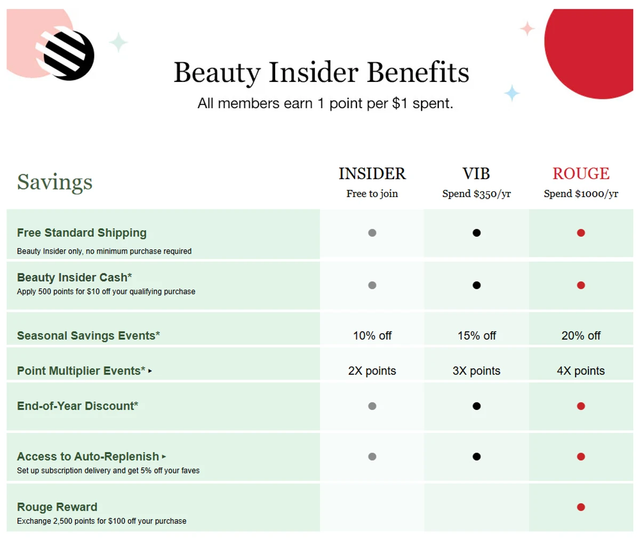
Sephora’s Beauty Insider program is often cited as one of the best examples of a successful eCommerce loyalty program. It offers a tiered rewards structure that provides increasingly valuable perks as customers spend more.
Key Features:
- Point-Based Rewards: Customers earn 1 point for every dollar spent, which they can redeem for exclusive products, discounts, or experiences.
- Tiered System: The program has three tiers:
- Insider (Free)
- VIB (Spend $350/year)
- Rouge (Spend $1,000/year).
- Experiential Rewards: Sephora’s program goes beyond discounts by offering experiences like beauty classes and early product launches.
Impact:
This program has been instrumental in increasing customer lifetime value (CLV) and fostering brand loyalty. According to reports, Sephora’s loyal customers account for the majority of its revenue, thanks to the highly engaging and personalized loyalty experience.
Why It Works:
- Personalization based on shopping behavior.
- The aspirational nature of tiered rewards encourages customers to spend more to unlock higher-tier perks.
2. Starbucks: Starbucks Rewards
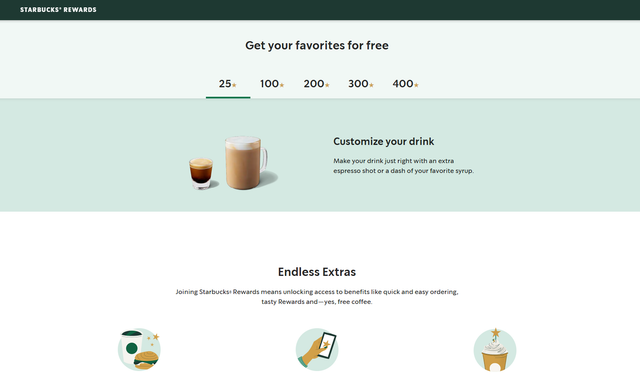
Although Starbucks Rewards operates primarily in the physical retail space, its rewards program is a standout example of digital loyalty excellence, with strong eCommerce and mobile integration.
Key Features:
- App Integration: The Starbucks app allows users to earn stars (points) for every purchase made, whether in-store or online.
- Gamification: Customers can earn double stars on special days or during promotions, keeping engagement high.
- Free Customizations: Redeemable points can be used for free drinks, food, and even special product customizations, enhancing the customer experience.
- Order Ahead Feature: Members can order ahead and skip the line, making the experience faster and more convenient.
Impact:
This program has created a seamless omni-channel experience for customers, blending eCommerce, mobile, and physical store interactions. Starbucks Rewards reportedly drives 40% of total sales, with loyalty members showing higher frequency and average spending.
Why It Works:
- Strong mobile-first strategy.
- Instant gratification through star redemption and exclusive benefits.
3. Amazon: Amazon Prime Membership
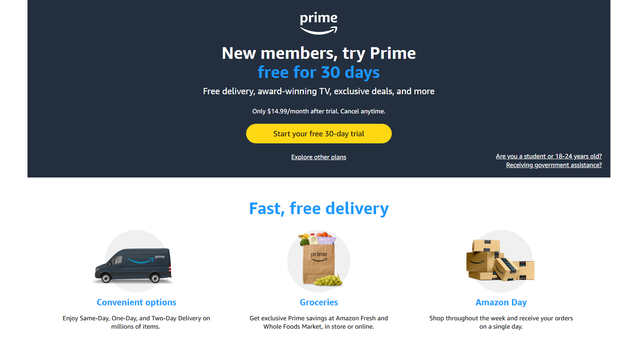
Amazon Prime is more than just a subscription; it’s a loyalty program that offers a wide range of benefits and encourages members to shop exclusively with Amazon.
Key Features:
- Free Shipping: Unlimited two-day (or even same-day) shipping on millions of items.
- Exclusive Deals: Members get early access to special deals and sales.
- Content Benefits: Prime membership includes access to streaming services (Prime Video, Prime Music) and other perks like Kindle eBooks.
- Subscription Add-Ons: Prime members can subscribe to additional services like Prime Pantry and Amazon Fresh.
Impact:
Amazon Prime has over 200 million members worldwide., significantly driving repeat purchases and average order value. Members are more likely to stay loyal due to the extensive value offered by the program.
Why It Works:
- Combines eCommerce and entertainment into a single value-driven ecosystem.
- High perceived value ensures long-term customer engagement and retention.
4. Nike: Nike Membership Program
Nike’s loyalty program centers around creating a connected fitness and shopping experience, blending lifestyle with commerce through exclusive member benefits.
Key Features:
- Exclusive Access: Members get early access to new product drops, personalized product recommendations, and exclusive Nike gear.
- Personalized Workouts: Access to the Nike Training Club app with guided workouts, fitness plans, and expert advice.
- Member Events: Invitations to virtual and in-person events and workshops.
- App-Centered Experience: Seamless integration with the Nike app ecosystem for easy access and engagement.
Impact: Nike’s membership program has been key in driving digital engagement and fostering long-term brand loyalty. According to Nike, members spend nearly 3 times more than guest shoppers.
Why It Works:
- Strong emotional brand connection and lifestyle integration.
- Combining community, fitness, and shopping in one personalized ecosystem.
5. Ulta: Ultamate Rewards
Ulta’s Ultamate Rewards is a highly personalized, points-based program that directly competes with Sephora, offering value and flexibility to beauty shoppers.
Key Features:
- Point-Based Rewards: Earn 1 point per dollar spent, with points redeemable for product discounts.
- Tiered Structure: Platinum and Diamond tiers unlock more rewards, such as birthday gifts and exclusive events.
- Double/Triple Points Events: Frequent bonus events drive spikes in engagement and sales.
- Birthday Gifts & Custom Offers: Personalized coupons and gifts based on user behavior.
Impact: Ulta has over 40 million loyalty members, and they account for more than 95% of total sales - a testament to how effective the program is in driving retention.
Why It Works:
- Generous and flexible point redemption system.
- Strong use of personalization to deepen emotional loyalty.
6. H&M: H&M Member
H&M’s loyalty program blends fashion perks with eco-conscious features, appealing to value-driven and environmentally aware consumers.
Key Features:
- Points for Purchases & Actions: Members earn points not only for shopping but also for recycling clothes and bringing reusable bags.
- Bonus Vouchers & Discounts: Redeem points for vouchers and get special pricing on select items.
- Early Access & Free Returns: Members enjoy exclusive access to sales and free online returns.
Impact: The program supports H&M’s sustainability goals while building shopper loyalty. It has helped drive repeat purchases and reduce churn in a competitive fast-fashion market.
Why It Works:
- Eco-friendly incentives attract sustainability-conscious consumers.
- Simple, accessible, and benefit-driven design encourages participation.
7. The North Face: XPLR Pass
The North Face’s XPLR Pass rewards loyalty by enhancing the customer’s outdoor lifestyle, merging product perks with brand experiences.
Key Features:
- Point-Based Perks: Earn points for purchases, attending events, and checking in at national parks.
- Gear Testing & Field Experience: Members can access product testing opportunities and outdoor experiences.
- Exclusive Discounts & Early Access: XPLR Pass holders get early access to new gear and members-only deals.
Impact: The North Face created a loyalty program that fuels its brand mission. XPLR Pass strengthens the emotional bond with outdoor enthusiasts and encourages repeat purchasing.
Why It Works:
- Taps into customer lifestyle and values, not just transactions.
- Adds experiential depth beyond standard rewards.
8. Petco: Vital Care Rewards
Petco’s Vital Care is a loyalty subscription program built around pet wellness, offering continuous value for pet parents.
Key Features:
- Monthly Credits: Members receive monthly credits for grooming, vet visits, and food.
- Personalized Health Dashboard: Track pet wellness history and upcoming care milestones.
- Discounts on Products & Services: Exclusive savings across pet categories.
Impact: The program boosts both frequency and spend. Pet parents enrolled in Vital Care reportedly spend 50% more than non-members annually.
Why It Works:
- Provides practical, recurring value that fits into the customer's lifestyle.
- Smart bundling of health, products, and services.
9. Glossier: Glossier Rewards
Glossier Rewards focuses on creating community-driven loyalty with a mix of rewards, referrals, and experiential bonuses.
Key Features:
- Points for Purchases & Referrals: Earn points for purchases and inviting friends.
- Redeem for Discounts or Freebies: Points can be redeemed for popular Glossier products.
- Social Sharing & Early Access: Members often get access to limited drops and behind-the-scenes content.
Impact: Glossier’s program complements its cult-like brand following, turning everyday customers into brand advocates.
Why It Works:
- Strong referral incentives aligned with brand loyalty.
- Authentic community-first rewards that feel “on-brand.”
10. Glamour Us: Joy Loyalty Program
Glamour Us is a popular cosmetics retailer serving the San Diego area for over 20 years. By implementing the Joy Loyalty app, they unified their loyalty experience across both physical and online stores—creating a seamless, retention-driven customer journey.
Key Features:
- Unified Online + In-Store Loyalty: Glamour Us used Joy to integrate Shopify POS and online store data, allowing customers to earn and redeem points regardless of channel.
- Flexible Point Earning: Customers earn points through purchases, birthdays, social follows, and even Google reviews.
- Seamless Migration: Joy migrated historical customer data—including VIP tiers, points, and birthdates—ensuring no customer was left behind.
- Personalized Loyalty Campaigns: Joy enabled birthday rewards and tier-based incentives to keep shoppers engaged beyond the first sale.
Impact:
- 197% Month-over-Month sales growth after launch
- 55% reward redemption rate, showing strong customer engagement
- 60% customer enrollment within 30 days
Why It Works:
- Easy for Glamour Us’ team to launch and manage without technical overhead
- Omnichannel experience increases touchpoints and conversion
- Incentivizes not just purchases, but actions like reviews and social engagement
Strategies to Create the Best Loyalty Programs for E-commerce
Here are actionable strategies used by some of the best e-commerce loyalty programs to stand out and succeed:
Align Your Loyalty Program with Business Goals
Start by asking: Do you want more repeat purchases, bigger order sizes, or new customer referrals? The structure and rewards should reinforce these goals. For example, if increasing AOV is your priority, reward bonus points for purchases above a threshold.
Personalize the Experience
Use customer behavior and purchase data to tailor the experience. Recommend rewards based on past purchases or send birthday gifts. The more personal your program feels, the more effective it becomes.
Create Urgency with Limited-Time Offers
Introduce point multipliers or flash reward events to drive engagement. For instance, offer double points for a weekend or triple points on a new product launch.
Combine Loyalty with Gamification
Turn earning rewards into a fun and engaging experience. Use progress bars, badges, and streak bonuses to keep customers invested and coming back.
Promote Everywhere - Not Just the Checkout
Highlight your loyalty program across your homepage, product pages, email marketing, and social media. Many e-commerce businesses bury their program, resulting in low participation.
Continuously Optimize Based on Data
Review key metrics like redemption rate, participation rate, and repeat purchase rate regularly. Adjust your point values, reward types, or tiers based on what’s driving the most value.
Build Your Ecommerce Loyalty Program With Joy
Building an ecommerce loyalty program doesn’t have to be complicated – Joy Loyalty makes it easy to create, manage, and promote a program that keeps your customers coming back. With seamless integration, customizable features, built-in promotion tools, and insightful analytics, Joy provides everything you need to launch a successful loyalty program tailored to your e-commerce business.
Don’t wait. Install Joy Loyalty App today and take the first step toward creating lasting relationships with your customers!
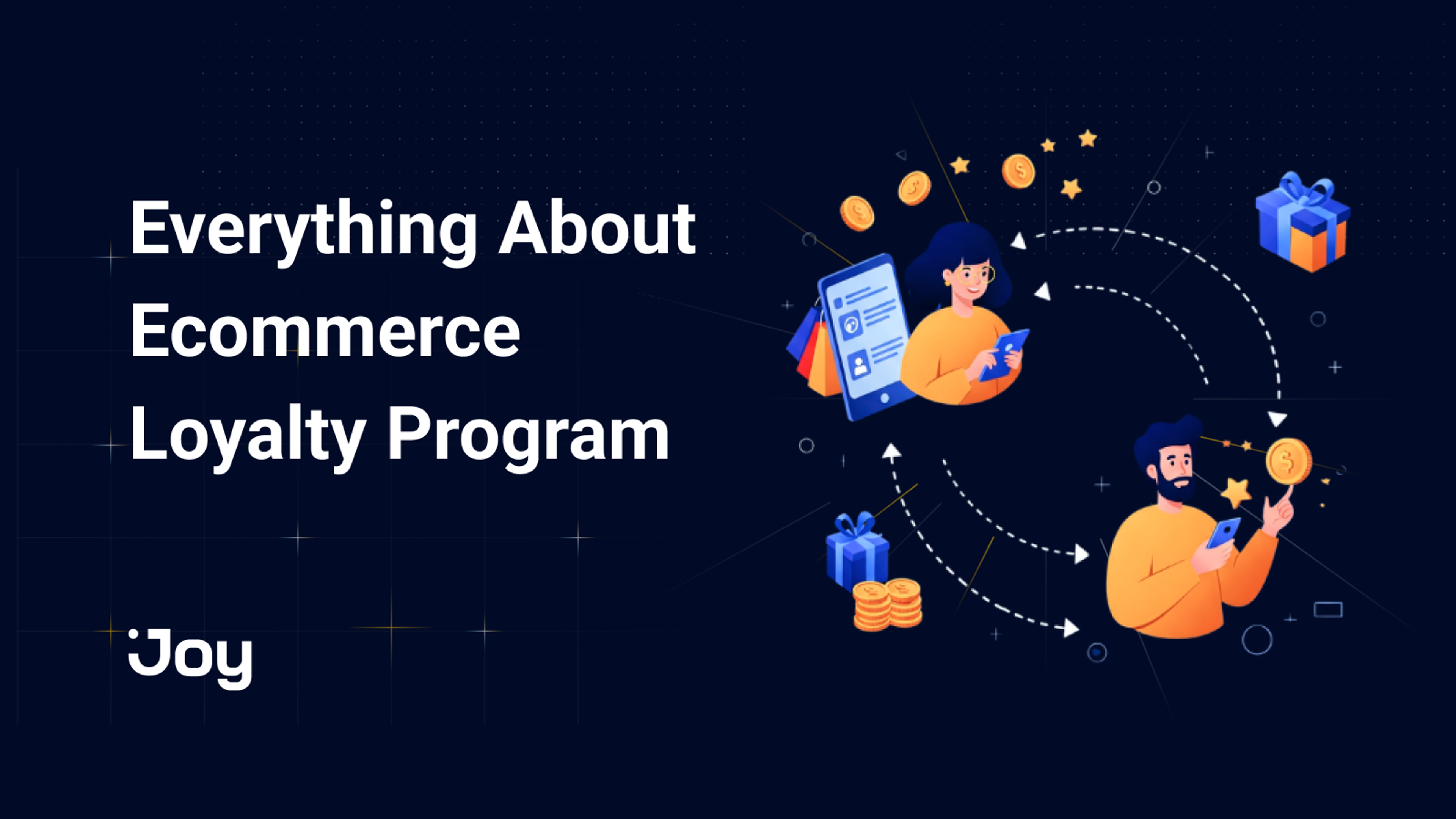


-a7e9a3.png?width=828&q=75&f=webp&auto=format)
